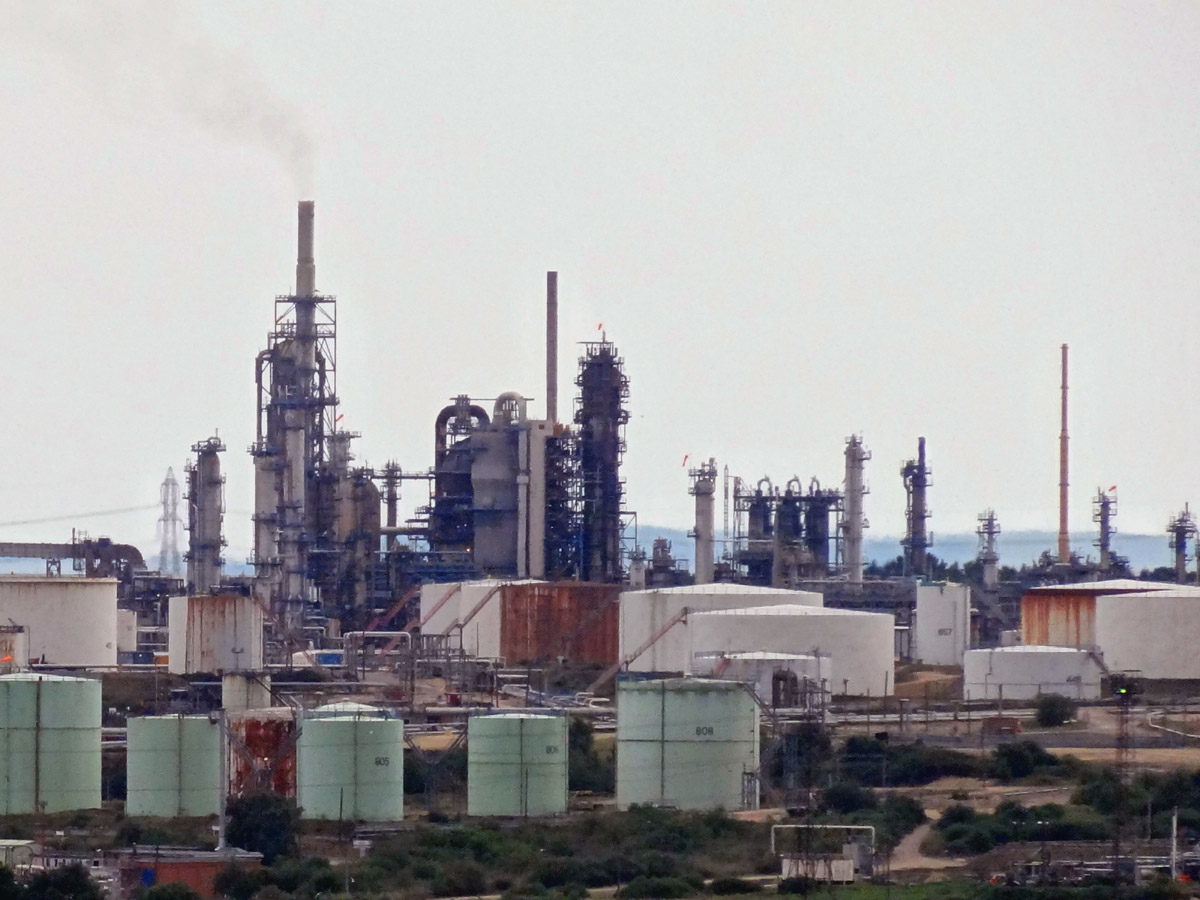 Oil prices have been rising in recent weeks. With Brent crude currently at around $85 per barrel, some commentators are predicting the price could reach $100. At the beginning of the year, the price was $67 per barrel; in June last year it was $44. In January 2016, it reached a low of $26. But what has caused the price to increase?
Oil prices have been rising in recent weeks. With Brent crude currently at around $85 per barrel, some commentators are predicting the price could reach $100. At the beginning of the year, the price was $67 per barrel; in June last year it was $44. In January 2016, it reached a low of $26. But what has caused the price to increase?
On the demand side, the world economy has been growing relatively strongly. Over the past three years, global growth has averaged 3.5%. This has helped to offset the effects of more energy efficient technologies and the gradual shift away from oil to alternative sources of energy.
On the supply side, there have been growing constraints.
The predicted resurgence of shale oil production, after falls in both output and investment when oil prices were low in 2016, has failed to materialise as much as expected. The reason is that pipeline capacity is limited and there is very little  scope for transporting more oil from the major US producing area – the Permian basin in West Texas and SE New Mexico. There are similar pipeline capacity constraints from Canadian shale fields. The problem is compounded by shortages of labour and various inputs.
scope for transporting more oil from the major US producing area – the Permian basin in West Texas and SE New Mexico. There are similar pipeline capacity constraints from Canadian shale fields. The problem is compounded by shortages of labour and various inputs.
But perhaps the most serious supply-side issue is the renewed sanctions on Iranian oil exports imposed by the Trump administration, due to come into force on 4 November. The USA is also putting pressure on other countries not to buy Iranian oil. Iran is the world’s third largest oil exporter.
Also, there has been continuing turmoil in the Venezuelan economy, where inflation is currently around 500 000 per cent and is expected to reach 1 million per cent by the end of the year. Consequently, the country’s oil output is down. Production has fallen by more than a third since 2016. Venezuela was the world’s third largest oil producer.
Winners and losers from high oil prices
The main gainers from high oil prices are the oil producing countries, such as Russia and Saudi Arabia. It will also encourage investment in oil exploration and new oil wells, and could help countries, such as Colombia, with potential that is considered underexploited. However, given that the main problem is a lack of supply, rather than a surge in demand, the gains will be more limited for those countries, such as the USA and Canada, suffering from supply constraints. Clearly there will be no gain for Iran.
 In terms of losers, higher oil prices are likely to dampen global growth. If the oil price reaches $100 per barrel, global growth could be around 0.2 percentage points lower than had previously been forecast. In its latest World Economic Outlook, published on 8 October, the IMF has already downgraded its forecast growth for 2018 and 2019 to 3.7% from the 3.9% it forecast six months ago – and this forecast is based on the assumption that oil prices will be $69.38 a barrel in 2018 and $68.76 a barrel in 2019.
In terms of losers, higher oil prices are likely to dampen global growth. If the oil price reaches $100 per barrel, global growth could be around 0.2 percentage points lower than had previously been forecast. In its latest World Economic Outlook, published on 8 October, the IMF has already downgraded its forecast growth for 2018 and 2019 to 3.7% from the 3.9% it forecast six months ago – and this forecast is based on the assumption that oil prices will be $69.38 a barrel in 2018 and $68.76 a barrel in 2019.
Clearly, the negative effect will be greater, the larger a country’s imports are as a percentage of its GDP. Countries that are particularly vulnerable to higher oil prices are the eurozone, Japan, China, India and most other Asian economies. Lower growth in these countries could have significant knock-on effects on other countries.
Consumers in advanced oil-importing countries would face higher fuel costs, accounting for an additional 0.3 per cent of household spending. Inflation could rise by as much as 1 percentage point.
The size of the effects depends on just how much oil prices rise and for how long. This depends on various demand- and supply-side factors, not least of which in the short term is speculation. Crucially, global political events, and especially US policies, will be the major driving factor in what happens.
Articles
Data
Questions
- Draw a supply and demand diagram to illustrate what has been happening to oil prices in the past few weeks and what is likely to happen in the coming weeks.
- What is the significance of the price elasticity of demand and supply in determining the size of oil price increase?
- What determines (a) the price elasticity of demand for oil; (b) the income elasticity of demand for oil; (c) the price elasticity of supply of oil?
- Why might oil prices overshoot the equilibrium price that reflects changed demand and supply conditions?
- Use demand and supply diagrams to illustrate (a) the destabilising effects that speculation could have on oil prices; (b) a stabilising effect.
- What industries might gain from higher oil prices and why?
- What would OPEC’s best policy be in the current circumstances? Explain.
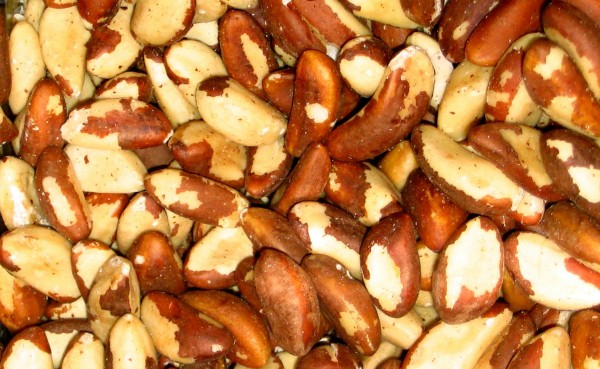 Food prices often rise or fall with good or bad harvests or because of a change in demand. A recent example is the price of brazil nuts, which by May this year had risen over 60% on European markets.
Food prices often rise or fall with good or bad harvests or because of a change in demand. A recent example is the price of brazil nuts, which by May this year had risen over 60% on European markets.
Part of the reason for the price rise has been on the demand side. Consumption of brazil nuts has increased as more people switch to healthier diets. This includes the purchase of the nuts themselves and as part of healthier snack foods. With supply being relatively inelastic, any rise in demand tends to have a relatively large effect on price.

A more acute reason is on the supply side. There has been a very poor harvest of brazil nuts. The nuts are grown largely in the Amazon basin which has been hit by drought linked to the El Niño effect. This, however, is only a temporary effect and future harvests should increase again as rainfall returns to normal. However, in the longer term, rainfall patterns may change with the effects of global warming.
The price rise in the UK has also be aggravated by the depreciation of the pound since the Brexit vote, which has fallen some 13% against the dollar since June 2016. A rise in the dollar price of brazil nuts has thus led to an even bigger rise in their sterling price.
Articles
Brazil nuts are rocketing in price – here’s why The Conversation, Iain Fraser (24/10/17)
Brazil nut prices soaring due to reduced harvests after droughts Independent, Zlata Rodianova (16/5/17)
Data
Index Mundi commodities Linked from Economics Network site
Commodity Markets World Bank (see Excel file of monthly prices)
Questions
- Explain the specific supply conditions that have affected the price of brazil nuts in 2017.
- Why did prices rise ahead of the change in supply?
- How has the size of the price rise been affected by the price elasticity of demand for brazil nuts?
- What determines the price elasticity of demand for brazil nuts?
- Find out what other food prices have risen or fallen a lot in recent months and explain why.
- How do real food prices (i.e. prices after correcting for inflation) compare today with 10 and 20 years ago? Explain why.
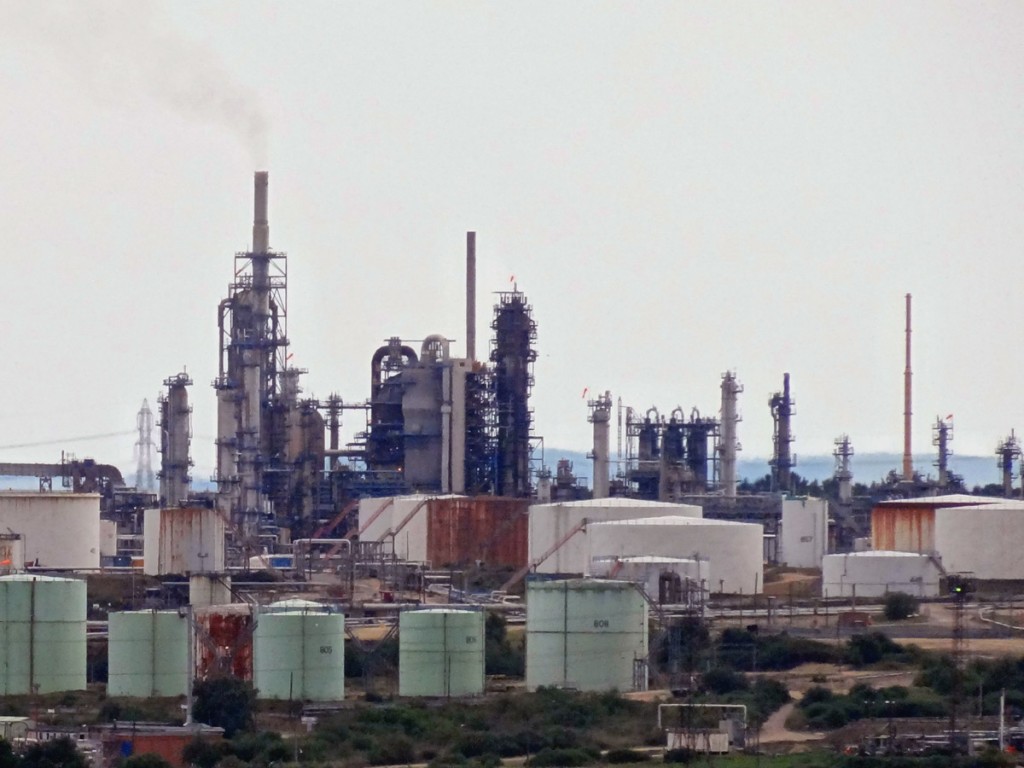 Oil prices are determined by demand and supply. Changes in oil prices are the result of shifts in demand and/or supply, with the size of the price change depending on the size of the shift and the price elasticity of demand and supply.
Oil prices are determined by demand and supply. Changes in oil prices are the result of shifts in demand and/or supply, with the size of the price change depending on the size of the shift and the price elasticity of demand and supply.
Some of the shifts are long term, with the price of oil varying from year to year or even moving in a particular direction for longer periods of time. Thus the opening up of new supplies, such as from fracking wells, can lead to a long-term fall in oil prices, while agreements by, say, OPEC to curb output can lead to a long-term rise in prices (see the blogs The oil see-saw, OPEC deal pushes up oil prices and An oil glut).
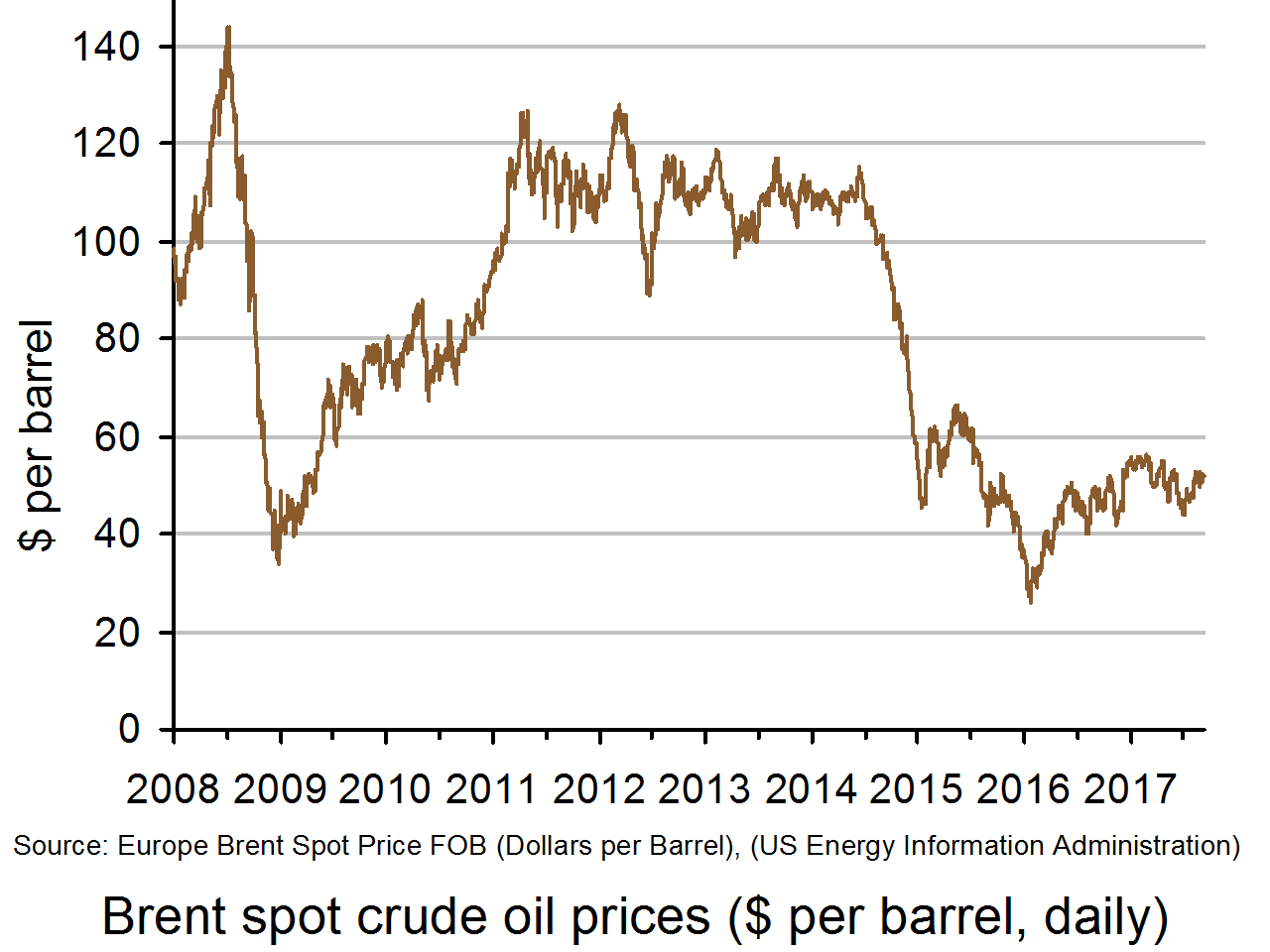
Medium and long-term price movements can also reflect medium and long-term changes in demand, such as a recession – oil prices fell dramatically as the world economy slid into recession in 2008/9 and then recovered as the global economy recovered.
Another long-term factor is the development of substitutes, such as renewable energy, which can reduce the demand for oil; another is developments that economise on power, such as more fuel-efficient vehicles and machines.
But oil prices do not just reflect these long-term movements in demand and supply. They also reflect daily and weekly movements as demand and supply respond to global and national events.
Two such events occurred at the end of August/beginning of September this year. The first was Hurricane Harvey. Even though it was downgraded to a tropical storm as it made landfall across the coast of the Gulf of Mexico, it dumped massive amounts of rain on southern Texas and Louisiana. This disrupted oil drilling and refining, shutting down a quarter of the entire US refining capacity. 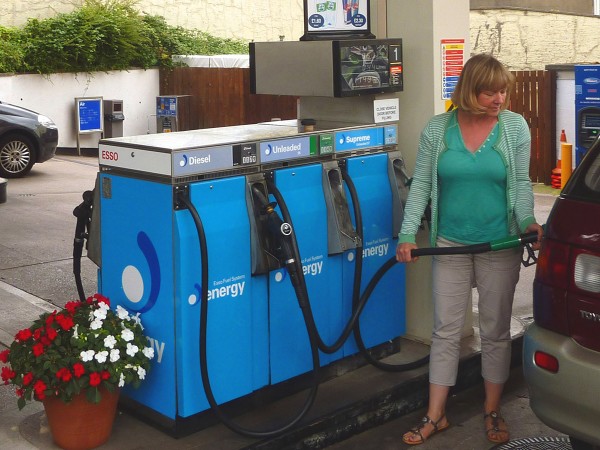 The initial effect was a surge in US oil prices in late August as oil production in much of Texas shut down and a rise in petrol prices as supplies from refineries fell.
The initial effect was a surge in US oil prices in late August as oil production in much of Texas shut down and a rise in petrol prices as supplies from refineries fell.
Then prices fell back again in early September as production and refining resumed and as it became apparent that there had been less damage to oil infrastructure than initially feared. Also the USA tapped into some of its strategic oil reserves to make up for the shortfall in supply.
Then in early September, the North Koreans tested a hydrogen bomb – much larger than the previous atom bombs it had tested. This prompted fears of US retaliation and heightened tensions in the region. As the Reuters article states:
That put downward pressure on crude as traders moved money out of oil – seen as high-risk markets – into gold futures, traditionally viewed as a safe haven for investors. Spot gold prices rose for a third day, gaining 0.9 per cent on Monday
Quite large daily movements in oil prices are not uncommon as traders respond to such events. A major determinant of short-term demand is expectations, and nervousness about events can put substantial downward pressure on oil prices if it is felt that there could be a downward effect on the global economy – or substantial upward pressure if it is felt that supplies might be disrupted. Often markets over-correct, with prices moving back again as the situation becomes clearer and as nervousness subsides.
Articles
U.S. crude edges higher, gasoline tumbles after Harvey Reuters, Libby George (4/9/17)
Global oil prices fall after North Korea nuclear weapon test Independent, Henning Gloystein (4/9/17)
Brent crude oil falls after North Korea nuclear test The Indian Express (4/9/17)
Oil prices remain volatile AzerNews, Sara Israfilbayova (4/7/17)
Questions
- What are the determinants of the price elasticity of demand for oil?
- Search news articles to find some other examples of short-term movements in oil prices as markets responded to some political or natural event.
- Why do markets often over-correct?
- Explain the long-term oil price movements over the past 10 years.
- Why is gold seen as a ‘safe haven’?
- If refineries buy oil from oil producers, what would determine the net effect on oil prices of a decline in oil production and a decline in demand for oil by the refineries?
- What role does speculation play in determining oil prices? Explain how such speculation could (a) reduce price volatility; (b) increase price volatility. Under what circumstances is (b) more likely than (a)?

If you want a ticket for an event, such as a match or a concert, but the tickets are sold out, what do you do? Many will go to an agency operating in the ‘secondary market’. A secondary market is where items originally purchased new, such as tickets, company shares, cars or antiques, are put up for sale at a price that the market will bear.
The equilibrium price in a secondary market is where supply equals demand and the actual price will approximate to this equilibrium. In the case of tickets, this equilibrium price can be much higher than the original price sold by the venue or its agents. The reason is that the original price is below the equilibrium.
This is illustrated in the figure (click here for a PowerPoint). Assume that the total supply of tickets is Qs. Assume also that the official box office price is Pbo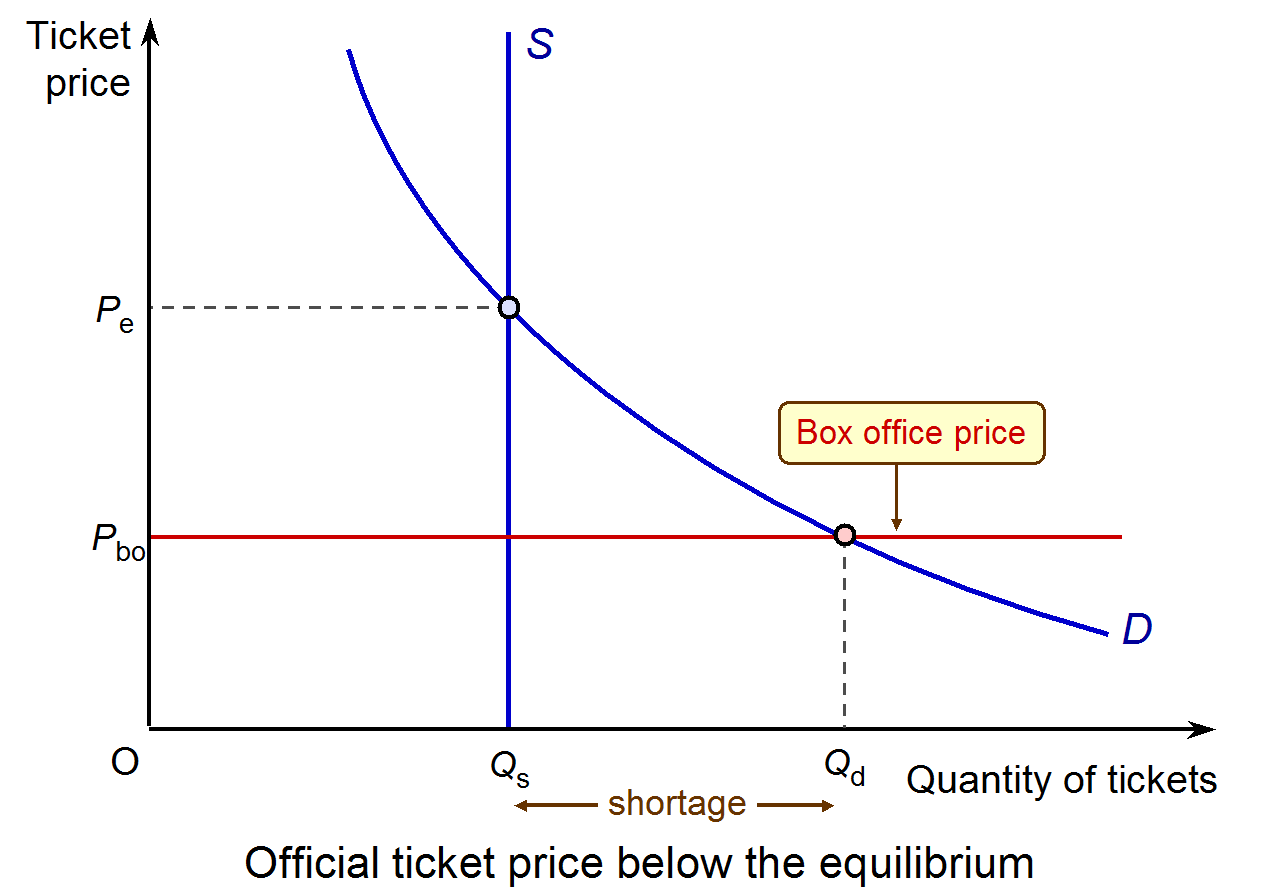 and that demand is given by the demand curve D. At the box office price demand exceeds supply by Qd – Qs. There is thus a shortage, with many fans unable to obtain a ticket at the official price. Many of you will be familiar with having to be as quick as possible to get hold of tickets where demand considerably outstrips supply. Events such as Glastonbury sell out within seconds of coming on sale.
and that demand is given by the demand curve D. At the box office price demand exceeds supply by Qd – Qs. There is thus a shortage, with many fans unable to obtain a ticket at the official price. Many of you will be familiar with having to be as quick as possible to get hold of tickets where demand considerably outstrips supply. Events such as Glastonbury sell out within seconds of coming on sale.
If you buy a ticket and then find out you cannot go to the event, you can sell the ticket on the secondary market through an online site or agency. Such agencies could be seen as providing a useful service as it means that otherwise empty seats will be filled. But if the equilibrium price is well above the original ticket price, there is the potential for huge gain by the agencies, who may pay the seller considerably less than the agency then sells the ticket to someone else.
What is more, the difference between the original price and the equilibrium price in the secondary market makes ticket touting, or ticket ‘scalping’, highly profitable. This is where people buy tickets with no intention of using them themselves but in order to sell them at much higher prices on the secondary market. Such ticket touting has been illegal for football matches since 1994 and was illegal for the 2012 London Olympics, but it is legal for plays, concerts, festivals and other events.
Ticket touts are often highly organised in obtaining tickets at official prices by buying early and using multiple credit cards and multiple identities to avoid systems that restrict the number of tickets issued to a card. They often use internet bots to mass purchase tickets the moment they go on sale.

Those in favour of ticket touting argue that the high price in the secondary market is just a reflection of demand and supply (see the IEA article below). Ticket touting allows tickets to be directed to people who value them most and will get the greatest benefit from it. What is more, banning ticket touting, so the argument goes, would simply drive it underground.
Those against argue on grounds of equity. Ticket prices set below the equilibrium are designed to give greater equality of access to fans. Rationing on a first-come first-served system, either on the internet or by a queue, is seen to be fairer than one by ability/willingness to pay. A poor person may be just as keen to go to an event as a rich person and gain just as much enjoyment from it, but cannot afford the high equilibrium price. What is more, non of the profit from the higher prices reaches the event organisers or the artists or players. Yet the mark-up and hence profit made by ticket touts can be massive, as the first Observer article below shows.
Various measures are being tried to prevent ticket touting. One is the use of paperless tickets, with the number of tickets limited per person and with people having to show their ticket on their phones along with ID at the door or gate. If a person cannot attend, then the solution is a system where they can give the ticket back to the box office (perhaps electronically) which will re-sell it for them at the official price.
A government-backed investigation, the Waterson review reported in May 2016 and recommended that touts should be licensed and that there should be harsher penalties for firms that flout consumer rights law as applying to ticket sales. Whether this would be sufficient to bring secondary market prices down significantly, remains to be seen. In the meantime, organisers do seem to be trying to find ways of beating the touts through smarter means of selling.
Articles
MP Nigel Adams calls for secondary ticket marketing to be reformed Music Week, James Hanley (14/9/16)
Iron Maiden go to war with ticket touts BBC News, Mark Savage (22/9/16)
 The new age of the ticket tout BBC World Tonight, Andrew Hosken (25/5/16)
The new age of the ticket tout BBC World Tonight, Andrew Hosken (25/5/16)
Government urged to help music industry tackle ticket touts The Guardian, Rob Davies (13/9/16)
Ticket touts face licensing threat The Guardian, Rupert Jones (26/5/16)
How the ticket touts get away with bleeding fans dry The Observer, Rob Davies and Rupert Jones (15/5/16)
What sorcery is this? A £140 ticket for new Harry Potter play now costs £8,327 The Observer, Rob Davies and Laurie Chen (14/8/16)
Ticket touts made $3m from the last Mumford & Sons tour. $0 went back to the music industry. Music Business Woldwide, Adam Tudhope (6/9/16)
This is tout of order – join the Daily Mirror campaign to beat rip-off ticket resales Daily Mirror, Nada Farhoud (19/9/16)
Ticket touts: A muggle’s game The Economist (20/8/16)
Can We Fight Back Against The Robot Touts Ruining Live Music? Huffington Post, Andy Webb (6/9/16)
In defence of ticket touts Institute of Economic Affairs, Steve Davies (25/2/15)
Report
Consumer protection measures applying to ticket resale: Waterson review Department for Business, Innovation & Skills and Department for Culture, Media & Sport 26/5/16)
Guide
#Toutsout MMF & FanFair Alliance September 2016
Questions
- Why can ticket touts sell tickets above the equilibrium price shown in the diagram?
- In what ways could ticket touts be said to be distorting the market?
- How do ticket touts reduce consumer surplus? Could they reduce it to zero?
- Why may allowing ticket touting to take place result in empty seats at concerts or other events?
- Would it be a good idea for event organisers to charge higher prices for popular events than they do at present, but still below the equilibrium
- How does the price elasticity of demand influence the mark-up that ticket touts can make? Illustrate this on a diagram similar to the one above.
- Is it in ticket touts’ interests to adjust prices as an event draws closer, just as budget airlines adjust seat prices as the plane fills up? Could organisers sell tickets in the primary market in this way with prices rising as the event fills up?
- Discuss the various ways in which the secondary ticket market could be reformed? To what extent do these involve reforms in the primary ticket market?
 Your Americano, Latte or Cappuccino may soon be more expensive. This is because coffee bean prices are rising. A combination of continuing growth in demand and poor coffee harvests in various parts of the world have led to a rise in both Arabica and Robusta prices, with the International Coffee Organization’s Composite Indicator price (in US dollars) having risen by over 30% since mid-January this year (see chart below: click here for a PowerPoint)
Your Americano, Latte or Cappuccino may soon be more expensive. This is because coffee bean prices are rising. A combination of continuing growth in demand and poor coffee harvests in various parts of the world have led to a rise in both Arabica and Robusta prices, with the International Coffee Organization’s Composite Indicator price (in US dollars) having risen by over 30% since mid-January this year (see chart below: click here for a PowerPoint)
Supply has been affected by droughts in Brazil and Vietnam, two of the world’s biggest coffee producers, and by pests (the Coffee Berry Borer) in the Kilimanjaro region of Tanzania and in other East African countries. Global exports of coffee in July 2016 were 22% down on the same month in 2015.
The growing shortage and rising current (spot) prices is reflected in future prices. 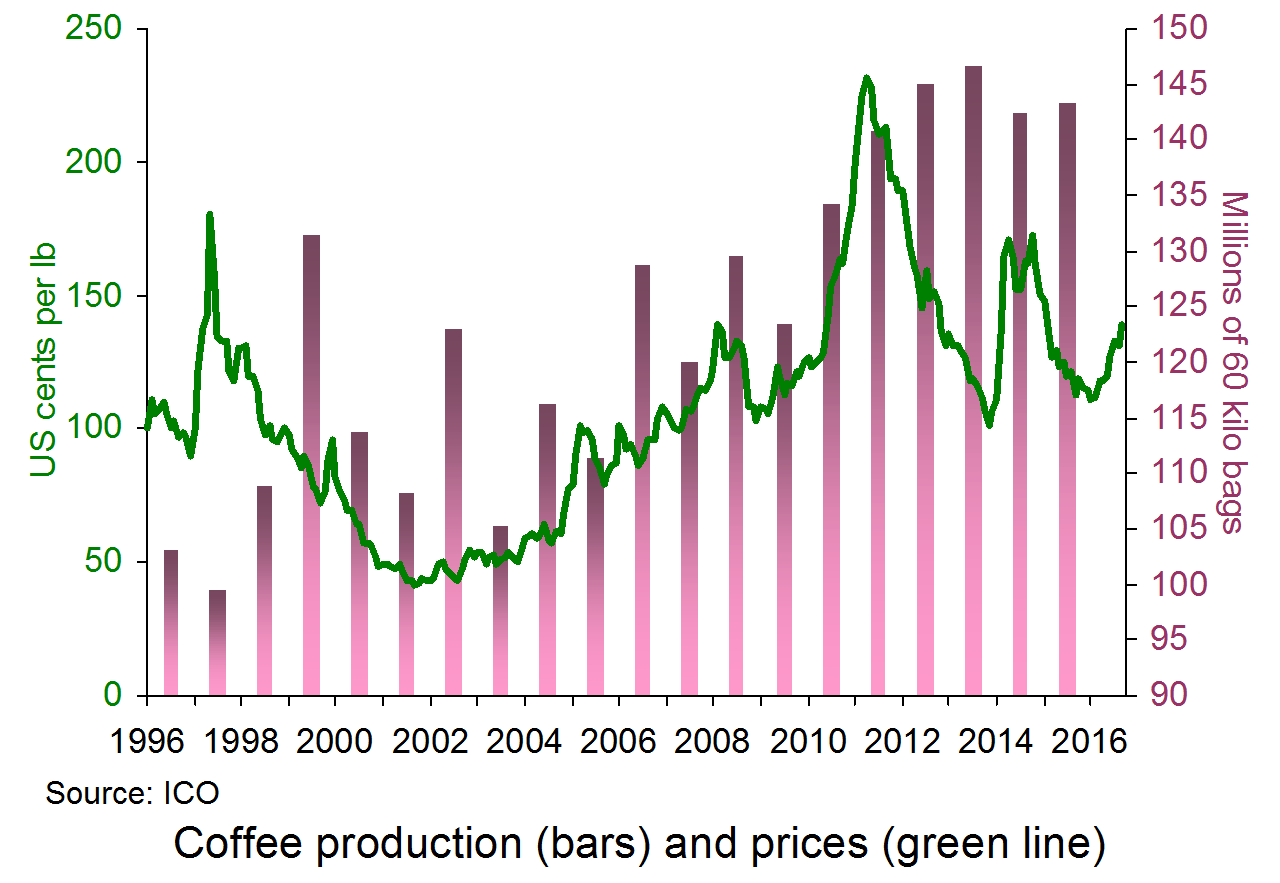 These are prices determined in the market now for trading at a specified future date (e.g. in three months’ time). Future prices depend on predictions of the balance of demand and supply in the future. According to the MarketWatch article below, “Analysts at Société Générale in a note predicted that prices could climb about 30% further by the end of next year”. The current (mid-September) spot price of robusta coffee beans is around $0.96 per lb. The December 2016 future price is around $1.48.
These are prices determined in the market now for trading at a specified future date (e.g. in three months’ time). Future prices depend on predictions of the balance of demand and supply in the future. According to the MarketWatch article below, “Analysts at Société Générale in a note predicted that prices could climb about 30% further by the end of next year”. The current (mid-September) spot price of robusta coffee beans is around $0.96 per lb. The December 2016 future price is around $1.48.
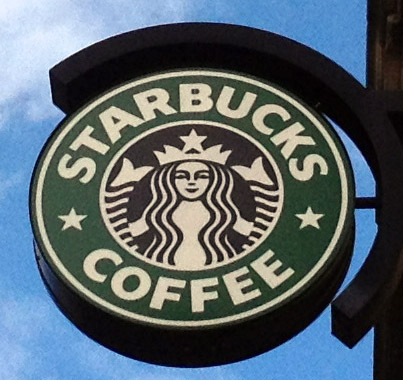 So what effect will this have on the prices in Starbucks, Costa or Caffè Nero? And what effect will it have on ground or instant coffee in supermarkets? To quote the MarketWatch article again:
So what effect will this have on the prices in Starbucks, Costa or Caffè Nero? And what effect will it have on ground or instant coffee in supermarkets? To quote the MarketWatch article again:
A research report from the US Department of Agriculture found that, on average, a 10% increase in green-coffee-bean prices per pound would yield a 2% increase in both manufacturer prices and at the register in places like Starbucks Corp.
This is because the cost of coffee beans is just one element in the costs of coffee roasters and coffee shops. Also these companies use futures markets to smooth out the prices they pay. They hold stockpiles of coffee, which they build up when prices are low and draw on when prices are high. This helps to reduce fluctuations in retail prices.
So don’t worry too much about the price of your morning coffee – at least, not yet.
Articles
Why a surge in coffee-bean prices may not hit the Starbucks set—yet MarketWatch, Rachel Koning Beals (9/9/16)
Wired coffee prices may not slip far News Markets, David Cottle (9/9/16)
Late-harvest woes prompt Brazil coffee harvest downgrade Agrimoney (7/9/16)
Look Out, Latte Lovers: Brazil Drought Hurts Espresso Beans Bloomberg, Fabiana Batista and Marvin G. Perez (13/9/16)
Why Your Morning Coffee Is About to Become Even More Expensive Fortune (28/7/16)
Climate change brews a storm for East Africa coffee farmers Business Daily (East Africa), Paul Redfern (4/9/16)
Coffee Market Report ICO (August 2016)
Data
Commodity Prices Index Mundi
Historical Data on the Global Coffee Trade ICO
ICO’s Coffee Trade Statistics Infographic for July 2016 ICO blog (31/8/16)
Questions
- What determines coffee futures prices?
- How are the price fluctuations of coffee in coffee shops related to the price elasticities of demand and supply? What determines these elasticities?
- Why does a strengthening (an appreciation) of the currency of a coffee exporter affect (a) the price of coffee to producers in the country; (b) international coffee prices in dollars?
- Are poor coffee harvests on balance good or bad for coffee producers? How does this depend on the market price elasticity of demand? Does the answer vary from producer to producer?
- How does speculation affect coffee prices (both spot and future)? Is such speculation of benefit to (a) the coffee consumer; (b) the coffee grower?
 Oil prices have been rising in recent weeks. With Brent crude currently at around $85 per barrel, some commentators are predicting the price could reach $100. At the beginning of the year, the price was $67 per barrel; in June last year it was $44. In January 2016, it reached a low of $26. But what has caused the price to increase?
Oil prices have been rising in recent weeks. With Brent crude currently at around $85 per barrel, some commentators are predicting the price could reach $100. At the beginning of the year, the price was $67 per barrel; in June last year it was $44. In January 2016, it reached a low of $26. But what has caused the price to increase? scope for transporting more oil from the major US producing area – the Permian basin in West Texas and SE New Mexico. There are similar pipeline capacity constraints from Canadian shale fields. The problem is compounded by shortages of labour and various inputs.
scope for transporting more oil from the major US producing area – the Permian basin in West Texas and SE New Mexico. There are similar pipeline capacity constraints from Canadian shale fields. The problem is compounded by shortages of labour and various inputs. In terms of losers, higher oil prices are likely to dampen global growth. If the oil price reaches $100 per barrel, global growth could be around 0.2 percentage points lower than had previously been forecast. In its latest World Economic Outlook, published on 8 October, the IMF has already downgraded its forecast growth for 2018 and 2019 to 3.7% from the 3.9% it forecast six months ago – and this forecast is based on the assumption that oil prices will be $69.38 a barrel in 2018 and $68.76 a barrel in 2019.
In terms of losers, higher oil prices are likely to dampen global growth. If the oil price reaches $100 per barrel, global growth could be around 0.2 percentage points lower than had previously been forecast. In its latest World Economic Outlook, published on 8 October, the IMF has already downgraded its forecast growth for 2018 and 2019 to 3.7% from the 3.9% it forecast six months ago – and this forecast is based on the assumption that oil prices will be $69.38 a barrel in 2018 and $68.76 a barrel in 2019.










